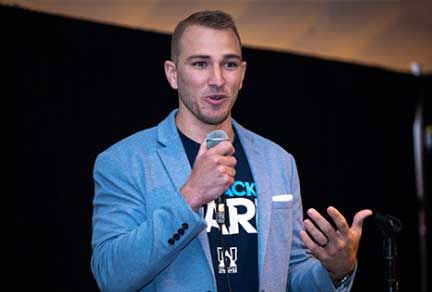Tightening rules, global trials: Sponsors’ concerns at ESMO 2025
The European Society for Medical Oncology (ESMO) 2025 Congress, held this October in Berlin, was, as always, a whirlwind of clinical data and therapeutic breakthroughs. Each year, we attend as medical oncologists and as part of Parexel’s regulatory and clinical development team. We often learn most outside the main auditorium and breakout sessions, in the dozens of private meetings we hold with emerging biotech, mid-size, and large pharma companies.
This year, the tension was palpable: Regulators’ demands for rigorous, patient-centric regulatory evidence are escalating, creating significant pressure for biotech companies on tight budgets trying to manage globalized trials, even as therapeutic innovation in targeted agents drives renewed industry optimism.
Here are the major topics that dominated our discussions at ESMO this year.
Complying with mandatory dose optimization
Unsurprisingly, the FDA’s Project Optimus, which shifts focus from the maximum tolerated dose (MTD) to the optimal dose for dose selection, was a major concern for sponsors at ESMO 2025. This important initiative now requires companies to explore dose-response relationships much earlier in development.
We have observed that many of our clients, particularly small biotechs with a single product and limited financial resources, often aim to move directly from first-in-human (FIH) dose-escalation studies to Phase 2 expansion cohorts. While understandable, this approach can sometimes bypass the critical dose optimization step, which is essential for maximizing therapeutic potential and ensuring long-term success.
Our guidance to these sponsors is clear: dose optimization plays a pivotal role in the development of oncology assets and is strongly recommended before moving into Phase 2. For most new oncology assets, this can avoid costly and time-consuming delays later in development. The FDA expects compelling responses to two key questions: "Can the dose go higher?" and "Can the dose go lower?" Addressing these questions thoroughly strengthens the overall development narrative and regulatory positioning.
The FDA's expectation for thorough dose optimization is broad, extending across different therapeutic approaches, including traditional small molecules, antibody-drug conjugates (ADCs), which often have notoriously narrow therapeutic windows, and radiopharmaceuticals.
Regulators might afford slight flexibility to a therapy targeting a rare, biomarker-driven disease with an acute medical need. However, the rule remains: the wider your target patient population, the more comprehensive and defensible your data package must be.
Restoring overall survival as the gold standard for efficacy and safety
Sponsors we spoke to are deeply concerned about endpoint selection for pivotal trials because choices are made years in advance and must remain valid even if regulatory goalposts move. The decade-long trend of heavily relying on surrogate endpoints—such as progression-free survival (PFS) or objective response rate (ORR)—for rapid or accelerated approvals is now declining. This shift is driven by data indicating that many of these surrogates, when considered alone, failed to correlate with more prolonged overall survival (OS), the most objective and clinically meaningful measure for cancer patients.
The August 2025 FDA Draft Guidance on assessing OS in oncology trials formalizes this change by requiring sponsors to include OS not only as an efficacy measure but also as an essential safety endpoint. While OS remains the key efficacy measure in cancers with poor prognosis or later lines of treatment, it is often not straightforward to interpret as a primary efficacy indicator in less aggressive cases. For example, in hormone receptor-positive breast cancer or prostate cancer—where patients tend to live longer and undergo multiple subsequent treatments—the FDA is now emphasizing the collection of OS data to identify any potential long-term harmful effects of new therapies. This guidance mandates sponsors to plan for extensive long-term follow-up, increasing the complexity and duration of trials, even when OS is not the primary endpoint.
We strongly recommend that sponsors specify the OS analysis for safety in the statistical analysis plan (SAP) in advance and incorporate clear, event-driven interim analysis plans into the trial design to detect harm or futility early. For regulatory submission, if OS data remain immature, sponsors should be ready to provide projections or scenario analyses that effectively demonstrate the likelihood of ruling out a detrimental effect with further follow-up; this proactive data modeling is an essential part of the new guidance. We expect EMA requirements for OS collection to align closely with the FDA's current recommendations, making comprehensive, mature OS data essential for all global regulatory assessments.
Navigating global variability in the standard of care
The assumption that a single, universal standard of care (SOC) exists worldwide is collapsing as clinical trials become more global. In complex second- or third-line treatments, the SOC used in the United States may not be reimbursed or even available in Europe, China, or emerging markets. This geographic variation makes it logistically and ethically impossible to choose a single, consistent comparator for a randomized controlled trial globally. Sponsors, especially emerging biotechs, are grappling with how to design trials where the comparator arm includes multiple treatment options, a complexity that raises questions about interpretability, regulatory acceptability, and payer confidence.
For complex global Phase 3 trials in second-line or later settings, our recommended strategy is often investigator’s choice. This pragmatic design allows the site investigator to select a control treatment from a pre-defined, clinically relevant group of locally appropriate and available SOC regimens. This approach ensures local ethical care and is operationally feasible throughout a global footprint. Regulatory agencies generally accept the approach, provided two key requirements are met: the statistical analysis plan must be robust, and the sponsor must clearly justify why the specific choices are appropriate regional comparators. Our teams, composed of former regulators and clinical oncologists, routinely collaborate early with sponsors to define a globally acceptable and regionally justified range of options.
Flexibly aligning clinical strategy with business exit paths
Smaller biopharmaceutical companies face increasing constraints from lean financing environments, requiring highly flexible clinical development strategies. They continually assess complex exit options, such as partnering, licensing, or selling an asset outright, securing targeted regional deals, or creating a financing plan that progresses from trial start to a key data readout before seeking further investment.
To raise funds and attract partners, emerging companies must refine their value stories and evidence-generation plans. While adaptive trial designs are increasingly vital, a single, continuous design that transitions from Phase 1 to Phase 3 isn't always suitable. At Parexel, we promote an adaptive decision-making approach that aligns the clinical plan directly with the business goal. For example, an immediate exit strategy might require only a simple Phase 1 trial to generate enough high-quality data to validate the asset for sale. With an adaptive mindset, companies can utilize emerging data at both the trial and program levels to make timely, data-driven decisions on target validation, indication selection, and, most importantly, their financial inflection points and plans. We have guided many biotech companies through this dynamic process, adapting our own processes as a CRO along the way.
Avoiding FDA application delays
A widespread concern in our meetings was the perceived instability of the FDA—stemming from staffing cuts, leadership changes, and possible ripple effects of the current (as of October 25, 2025) government shutdown. Clients worry these issues could lead to significant regulatory delays for their submissions.
Our regulatory team meets weekly to monitor agency interactions for all our projects worldwide. Consequently, we can reassure clients that, so far, we have not seen any significant delays in oncology applications. Despite the noise and media coverage, the FDA continues to operate mostly as "business as usual." While we recognize personnel changes, the oncology review process, including pre-NDA meetings and Type C and D engagements, has moved forward without major issues. This consistency is essential for maintaining clinical development timelines. Even with the ongoing shutdown, the FDA is still mostly up and running because much of its work is funded by user fees that are paid by our industry rather than federal appropriations. So that's the good news: ongoing drug reviews, core safety work, and high-priority inspections are proceeding.
However, a shutdown impacts new drug applications (NDAs) because the agency cannot accept or process new user fees. One advantage of having a large team is our ability to mobilize and accelerate submissions when necessary. We anticipated the shutdown and worked around the clock to submit a sponsor’s NDA to the FDA early, on the eve of the shutdown, to prevent a delay.
Sustaining innovation in ADCs and radiopharmaceuticals
While the regulatory environment tightens, innovation persists, exemplified by the impressive progress of ADCs. These not only show meaningful clinical results across a broad range of cancers such as breast, bladder, ovarian, and lung, but are also being combined with other agents and moving earlier up the treatment algorithm and even into curative-intent applications. Growing confidence fueled by this success is in turn driving new development in antigen target selection and more precise designs that include bi- and tri-specific ADCs.
This technology is finally realizing the long-held vision of a magic bullet that delivers a powerful chemotherapeutic payload directly to the tumor. However, the success of ADCs also highlights the enormous cost and perseverance needed for true innovation. It took decades of determination—overcoming major challenges in developing stable linkers and humanized antibodies—to reach this point. This story reminds us that success in oncology drug development depends on sustained vision, rigorous data, and perseverance.
Precision oncology radiopharmaceuticals (RPTs), which use ligands to target specific proteins on cancer cells and deliver a lethal radioactive payload, are also experiencing a revival. Developing an RPT is highly complex and operationally demanding, requiring sponsors to implement disciplined risk management throughout clinical development and implementation. As these move to new indications, the need for scaling up institutional capabilities, optimizing patient pathways, and securing reliable novel isotope production capacity will be key to success.
The mandate for 2026: Global clinical, regulatory, and access strategies
Our conversations at ESMO 2025 confirmed a clear trend: we are entering an era of oncology drug development where global clinical strategies, not regional siloes, will define success. Regulatory expectations are consistently pushing programs to be more comprehensive and patient-focused from the earliest phases. The persistence that drove ADCs and RPTs to success is now required in strategic planning: sponsors must embrace early, randomized dose optimization and pre-specify OS safety plans. Given these tightened standards, integrated development and global alignment are no longer optional—they are essential for navigating complexity and securing the fastest, most de-risked path to market.
We are proud to support Parexel’s efforts in helping sponsors coordinate clinical, regulatory, and market access strategies across regions so they can bring innovative solutions to patients in need. Connecting with valued clients and potential new clients at ESMO 2025 renewed our sense of optimism and purpose.
Related Insights
Playbook
Advancing radiopharmaceutical development: Integrated clinical trial expertise mitigates risk
Dec 3, 2025
Report
New Medicines, Novel Insights: Advancing Precision Oncology
May 14, 2024
Article
Embarking on the Next Era of Precision Medicine
May 11, 2021
Blog
Highlights from ASCO: Our experts weigh in
Jul 13, 2021
Blog
Parexel names first Patient Ambassador
Jun 17, 2022
Blog
What Do the Next 10 Years Hold for CRISPR?
Jul 27, 2022
Blog
SITC Crisis in Clinical Research Virtual Summit – Collaborating to Drive Change
Aug 24, 2022
Podcast
Driving change in Cell & Gene Therapies: Key learnings from the SITC Virtual Summit
Sep 19, 2022
Article
Q&A Project Optimus: What you need to know
Oct 11, 2022
Article
Five strategies for meeting the requirements of Project Optimus and improving the chances of approval
Nov 10, 2022
Blog
Innovative modeling method could speed patient access to critical IO therapies
Jan 4, 2023
Blog
A hybrid model supports globally diverse site participation for a retrospective cancer study
Jul 24, 2023
Related Insights
Playbook
Advancing radiopharmaceutical development: Integrated clinical trial expertise mitigates risk
Dec 3, 2025
Report
New Medicines, Novel Insights: Advancing Precision Oncology
May 14, 2024
Article
Embarking on the Next Era of Precision Medicine
May 11, 2021
Blog
Highlights from ASCO: Our experts weigh in
Jul 13, 2021
Blog
Parexel names first Patient Ambassador
Jun 17, 2022
Blog
What Do the Next 10 Years Hold for CRISPR?
Jul 27, 2022
Blog
SITC Crisis in Clinical Research Virtual Summit – Collaborating to Drive Change
Aug 24, 2022
Podcast
Driving change in Cell & Gene Therapies: Key learnings from the SITC Virtual Summit
Sep 19, 2022
Article
Q&A Project Optimus: What you need to know
Oct 11, 2022
Article
Five strategies for meeting the requirements of Project Optimus and improving the chances of approval
Nov 10, 2022
Blog
Innovative modeling method could speed patient access to critical IO therapies
Jan 4, 2023
Blog
A hybrid model supports globally diverse site participation for a retrospective cancer study
Jul 24, 2023



